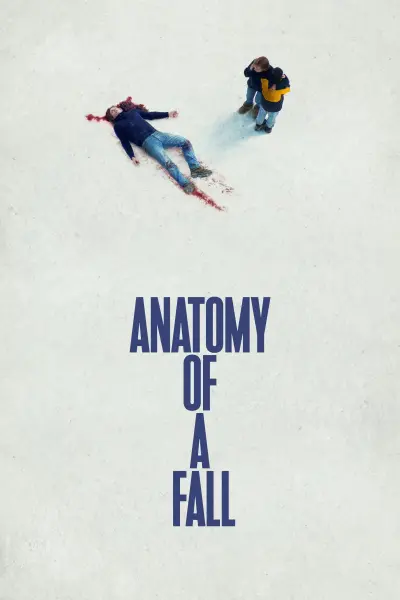
"Anatomy of a Fall" stands as an exceptional cinematic narrative, intricately woven around a criminal investigation that profoundly explores human relationships, truth, and perception. Set against the backdrop of a mysterious death, the film centers on the life of Sandra Voyter, a distinguished novelist whose world is turned upside down following the tragic demise of her husband, Samuel. The setting, a secluded mountain chalet near Grenoble, becomes the stage for this drama, involving Sandra, Samuel, and their visually impaired son, Daniel. The sudden death of Samuel ignites a complex investigation, spotlighting the couple's troubled marriage and their past, which significantly impacts the present.
Delving into the couple's past, the film unravels layers of unresolved conflict and emotional distress. A pivotal moment in their relationship, and a central theme in the film, is the tragic accident that resulted in the loss of Daniel's vision—an event that Samuel internalizes with guilt and believes Sandra blames him for. This incident marks the onset of their relationship's decline, leading to Sandra's infidelity and Samuel's profound guilt and emotional turmoil. The discovery of an audio recording of a heated argument between the couple adds complexity to the case, hinting at a history of both physical and emotional abuse.
The legal proceedings in the film offer a meticulous examination of Sandra and Samuel's shared life. The intense scrutiny of their marriage spans personal conflicts, professional jealousy, and the mental health struggles Samuel endured, including a suspected suicide attempt and habitual self-harm. Sandra's defense is largely predicated on the assertion of Samuel's suicidal tendencies, a claim that is disputed by the prosecution and lacks concrete evidence.
Daniel's role is central to the narrative's development. As a key witness, his testimony and unique actions critically influence the trial's direction. His experiment with their dog, Snoop, intended to corroborate the theory of Samuel's aspirin overdose, and his testimony regarding Samuel's enigmatic comments about life and death, introduce a pivotal turn in the trial. Nonetheless, the film artfully maintains an ambiguity regarding Sandra's culpability, challenging the audience to confront the complexities of truth and individual perception.
Directed by Justine Triet, "Anatomy of a Fall" transcends the boundaries of a typical courtroom drama, delving into the complex dynamics of human relationships. The film probes deeply into themes of communication breakdown, infidelity, and the burdens of guilt and resentment. Sandra Hüller's portrayal of Sandra Voyter is marked by a nuanced sensitivity, embodying a character replete with internal conflicts and profound emotional layers. The film raises questions about the accuracy of the events and the reliability of personal narratives in discerning truth.
"Anatomy of a Fall" is a remarkable cinematic experience that extends beyond conventional genre storytelling, presenting a rich, character-driven plot. The film's extended duration, over two and a half hours, augments its depth, allowing audiences to fully immerse themselves
in the chilling atmosphere of Sandra and Samuel's home. This length is crucial, as it enables the film to delve deeper into the cold, strained dynamics within the family. The film asks profound questions about trust, betrayal, and the complexities of the human psyche, while recognizing the inherent limitations in fully understanding or judging another person's life. This narrative complexity, combined with the exceptional performances, renders "Anatomy of a Fall" a thought-provoking and emotionally resonant film.
The movie's strength lies in its ability to maintain a persistent ambiguity about Sandra's guilt or innocence, masterfully weaving a narrative that keeps viewers engaged and contemplative. This ambiguity is a key element, as it reflects the film's exploration of the subjective nature of truth and the intricate process of narrative-making. The film challenges viewers to consider the multiple facets of a story, the unreliability of perceptions, and the impact of personal biases.
Justine Triet's direction in "Anatomy of a Fall" is noteworthy for its focus on character development and emotional authenticity. The film avoids melodrama, instead opting for a realistic portrayal of the characters' struggles and emotions. Sandra Hüller's performance as Sandra Voyter is particularly striking, offering a complex and deeply felt representation of a woman grappling with the sudden death of her husband and the subsequent unraveling of her life.
In summary, "Anatomy of a Fall" is not just a film about a mysterious death and a subsequent trial; it is a profound exploration of the human condition. It examines the nuances of relationships, the elusive nature of truth, and the impact of past events on the present. The film's deliberate pacing, intense character focus, and thematic depth set it apart as an exceptional piece of cinema that resonates with audiences long after the credits roll. This movie is a masterful blend of mystery, drama, and psychological exploration, making it a standout film in contemporary cinema.

